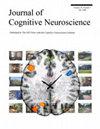Perceptual Awareness in Human Infants: What is the Evidence?
IF 3.1
3区 医学
Q2 NEUROSCIENCES
引用次数: 0
Abstract
Perceptual awareness in infants during the first year of life is understudied, despite the philosophical, scientific, and clinical importance of understanding how and when consciousness emerges during human brain development. Although parents are undoubtedly convinced that their infant is conscious, the lack of adequate experimental paradigms to address this question in preverbal infants has been a hindrance to research on this topic. However, recent behavioral and brain imaging studies have shown that infants are engaged in complex learning from an early age and that their brains are more structured than traditionally thought. I will present a rapid overview of these results, which might provide indirect evidence of early perceptual awareness and then describe how a more systematic approach to this question could stand within the framework of global workspace theory, which identifies specific signatures of conscious perception in adults. Relying on these brain signatures as a benchmark for conscious perception, we can deduce that it exists in the second half of the first year, whereas the evidence before the age of 5 months is less solid, mainly because of the paucity of studies. The question of conscious perception before term remains open, with the possibility of short periods of conscious perception, which would facilitate early learning. Advances in brain imaging and growing interest in this subject should enable us to gain a better understanding of this important issue in the years to come.人类婴儿的感知意识:证据是什么?
尽管从哲学、科学和临床角度来看,了解人类大脑发育过程中意识是如何以及何时产生的非常重要,但对婴儿出生后第一年的感知意识的研究仍然不足。尽管父母们无疑都相信他们的婴儿是有意识的,但由于缺乏足够的实验范例来解决学步前婴儿的这一问题,一直阻碍着这一课题的研究。然而,最近的行为学和脑成像研究表明,婴儿从很小的时候就开始进行复杂的学习,他们的大脑比传统认为的更有结构。我将对这些结果进行快速概述,这些结果可能为早期感知意识提供了间接证据,然后我将介绍如何在全局工作空间理论的框架内对这一问题进行更系统的研究,全局工作空间理论确定了成人有意识感知的特定特征。根据这些大脑特征作为有意识感知的基准,我们可以推断,有意识感知存在于一岁的后半期,而 5 个月之前的证据则不那么可靠,这主要是因为相关研究较少。胎儿出生前的有意识感知问题仍未解决,有可能存在短时间的有意识感知,这将有助于早期学习。大脑成像技术的进步和人们对这一问题日益增长的兴趣,将使我们在未来几年更好地理解这一重要问题。
本文章由计算机程序翻译,如有差异,请以英文原文为准。
求助全文
约1分钟内获得全文
求助全文
来源期刊
CiteScore
5.30
自引率
3.10%
发文量
151
审稿时长
3-8 weeks
期刊介绍:
Journal of Cognitive Neuroscience investigates brain–behavior interaction and promotes lively interchange among the mind sciences.

 求助内容:
求助内容: 应助结果提醒方式:
应助结果提醒方式:


